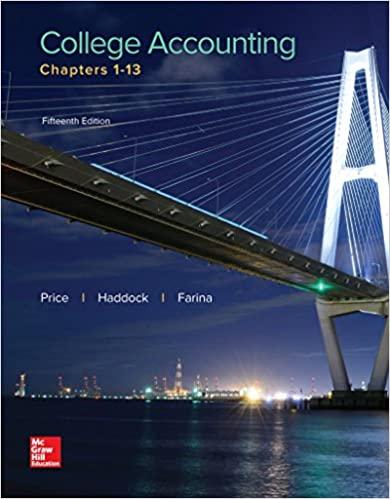Answered step by step
Verified Expert Solution
Question
1 Approved Answer
. Assignment Question: make a variance analysis report based on the information in Exhibit 1 . Would this be sufficient to explain the profit shortfall
Assignment Question: make a variance analysis report based on the information in Exhibit
Would this be sufficient to explain the profit shortfall to Norton at the AM meeting?
Actual value Budgeted Value Variance Amount Acceptable & unacceptable
Revenues Acceptable
Expenses unacceptable
Profits unacceptable
Actual Revenue AR $
Budgeted Revenue ER $
Total Revenue Variance AR ER
$ $ $
Actual revenue is more than budgeted, so this is a favorable scenario.
Actual Expenses AE $
Budgeted Expenses EE $
Total Expense variance AE EE
$ $ $
Actual expense is more than the expected expenses, it is an unfavorable scenario.
Actual Profits $
Budgeted Profits $
Total Profit variance AP EP
$ $$
Actual profit is way less than budgeted profit, making this an unfavorable scenario.
ANALYSIS
With the information in display we need the fundamental part of expenses and encourage points of interest, which is almost how the two divisions have gone through and earned their cash. So more than the given data is needed to discover the zone of issue. From the information in Exhibit we can tell there's an increment in cost but we cannot clarify why the cost has increased. This gives us a course where we must walk to discover the genuine root cause.
Assignment Question make a variance analysis report based on the information in Exhibit QuantityEfficiency Variance Actual Quantity Expected Quantity Expected Price PriceRate Variance Actual Price Expected Price Actual Quantity
QuantityEfficiency Variance Actual Quantity Expected Quantity Expected Price PriceRate Variance Actual Price Expected Price Actual Quantity
Revenue variance analysis:
Actual quantity
Budgeted
Quantity
Expected price Variance amount Acceptable & unacceptable
Revenue quantity # of hours A
Actual price Expected price Actual quantity Variance amount A&U
Revenue Rate hourly Rate U
Total Revenue A
The actual amount is more than the budgeted amount, so indeed, even though the introductory hourly rate is somewhat lesser than the budgeted hourly rate, the genuine addup to income has expanded and the fluctuation in income is favorable.
Consultant expense analysis:
Actual quantity Budgeted quantity Expected price Variance amount A&U
Consultant expense quantity U
Consultant expense rate U
Total consultant expense variance U
Per unit cost of specialist expense Number of consultants
Actual per unit cost of expert
Budgeted per unit price of consultant $
Within the cost situation, the most parameter number of experts and the actual expense
rate of experts both have expanded. So the company is paying or investing more in
consultants. The change in specialist cost is acceptable.
Total expense analysis: Total expense variance Consultant expense variance Operating expense variance
Actual operating expense Expected operating expense Variance A&U
Operating expense U
Total expense variance U
The information in this address could be further than the one provided for the primary address. Here, one of the contributing components to the increment in cost is the increase in the number of experts and the expert cost rate. On the other hand, the unacceptable fluctuation within the working cost is more noteworthy than the budgeted or anticipated working cost.
Assignment Question make a spending and volume variance analysis of operating expenses based on the additional information supplied in Exhibit
Number of budgeted consultants
Budgeted variable expense Number of budgeted consultants
Budgeted Variable expense per consultant
Spending variance Actual Expense Flexible Expense
Actual Flexible budget variance Flexible Sales volume variance Budget Static budget variance
Revenues
Less
Consultant salaries and fringes
Operating expenses
Total expenses
Operating profit
Profit
Operating statistics Actual Flexible Budget
Number of consultant FTE
Hours supplied
Hours billed
Average billing rate
Flexible Budget Variance Actual Operating Profit Flexible Operating Profit U
Sales Volume Variance Flexible Operating Profit Budget Operating Profit A
Static Budget Variance
Step by Step Solution
There are 3 Steps involved in it
Step: 1

Get Instant Access to Expert-Tailored Solutions
See step-by-step solutions with expert insights and AI powered tools for academic success
Step: 2

Step: 3

Ace Your Homework with AI
Get the answers you need in no time with our AI-driven, step-by-step assistance
Get Started


